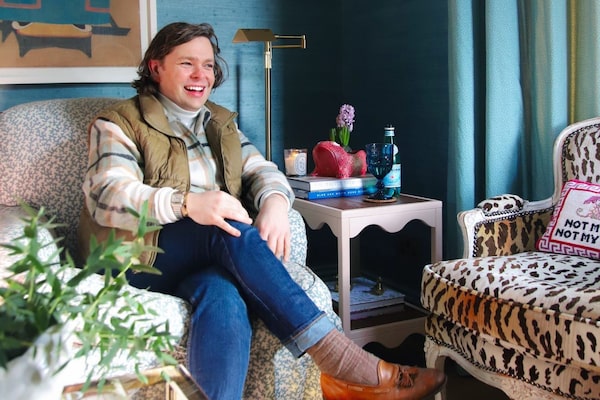
Sean Symington embraces the classical elements of English decor while capturing the imagination of the social-media set.Chris Wakefield/Supplied
When interior designer Sean Symington posted a shot of his strawberry-ice-cream-coloured kitchen on Instagram last November, the image garnered 6,000 likes and swooning approval from fellow tastemakers. Recently, the British magazine Homes & Gardens, declared the London-based talent one of 14 designers “defining how to decorate now.”
Traditional-leaning and fearless with colour and print, Symington honed his skills with some of the biggest names in London before launching his boutique studio in 2019, at age 25. His style superpower? Embracing the classical elements of English decor while capturing the imagination of the social-media set.
But there’s a detail that’s not as widely known. As the craving for all things English and “cottagecore” continues to trend upward, one of the new faces of British design is Canadian.
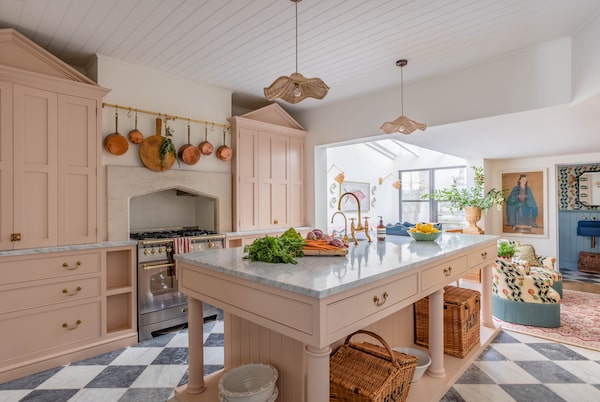
Chris Wakefield/Supplied
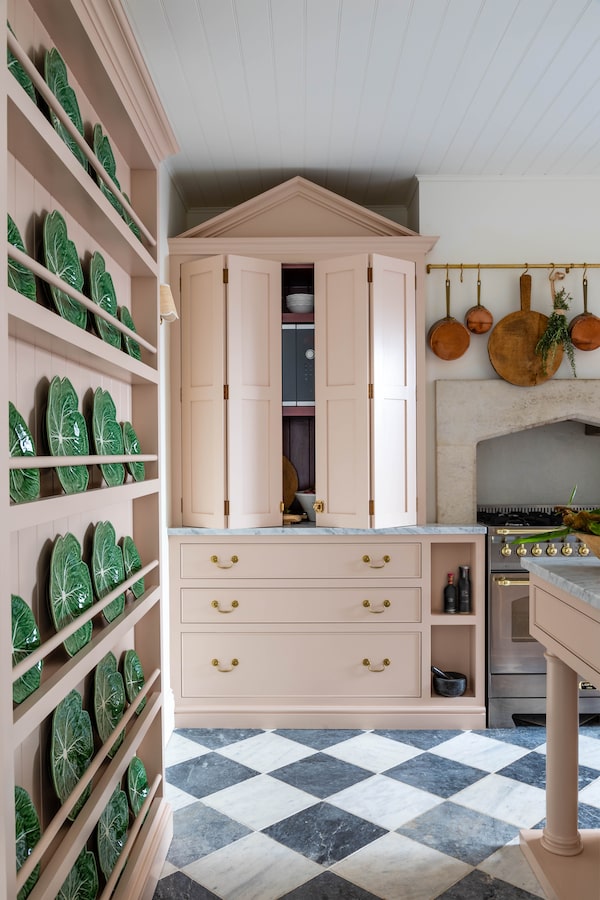
When interior designer Sean Symington posted a shot of his strawberry-ice-cream-coloured kitchen on Instagram last November, the image garnered 6,000 likes and swooning approval from fellow tastemakers.Chris Wakefield/Supplied
Symington grew up in Pickering, Ont., and always dreamed of being a designer – a career path he credits to a creative Irish mother who got him excited about the art of keeping a lovely home. As a “real-estate obsessed” child, he’d spend hours watching HGTV (Divine Design was a favourite) and building Lego houses. “My parents would say, ‘Why are you furnishing them? No one can see what’s inside,’” he recalls with a laugh. “But I knew what was inside.”
In high school, he took a co-op placement at a developer’s model suite so he could help clients pick finishes for their new homes. At Ryerson (now Toronto Metropolitan University), where he graduated from the interior design program, Symington knew his aspirations were different from students who prized the program’s conceptual focus. Instead, he was keen to learn about managing project budgets and client expectations.
“I wasn’t the best student because I just did what I wanted,” he admits. “Others would be up in front of the class doing these high-tech walkthrough videos and I’d be presenting in my Polo shirt going, ‘Here’s my plan to design a country club in Prince Edward County.’ ”
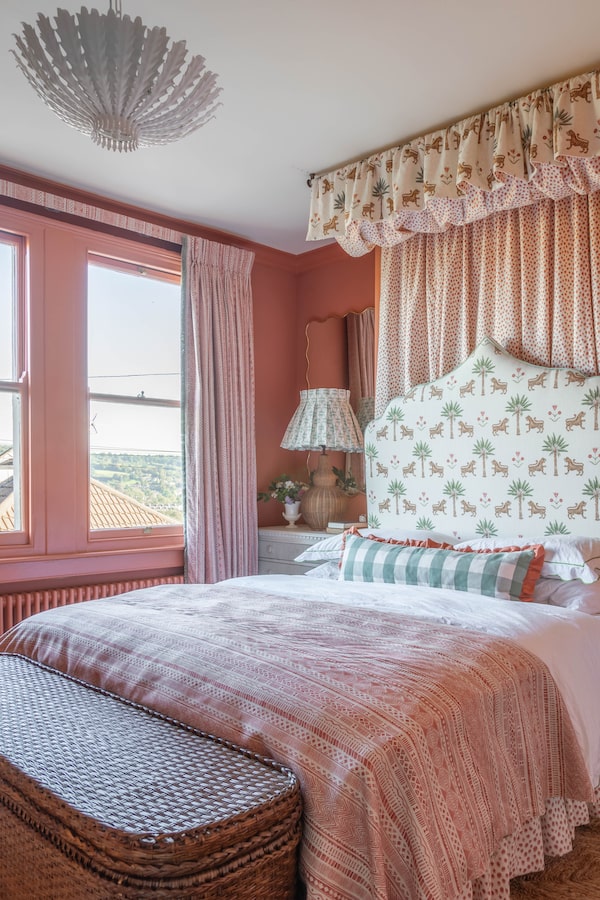
Eager to learn and experience the European design scene, Symington moved to London in 2014.Chris Wakefield/Supplied
Still, Symington never questioned or strayed from his path. After graduation, that country-club aesthetic landed him a job at Lori Morris Interior Design, a Toronto luxury firm that counts socialites and philanthropists as clients. “My technical skills grew but it was a bit soul-crushing,” says Symington. “We were doing super-high-end residential builds modelled after French architecture – I called it ‘Versailles in the Sky’ – but I hadn’t even been to Versailles.”
Eager to learn and experience the European design scene, Symington moved to London in 2014. “I think you’re born with an inherent aesthetic but you need to work for people to establish your style,” he says of the decision.
Symington spent the next several years soaking up knowledge from designers he admired. A stint at Samantha Todhunter Design, a studio known for artful urban interiors, had him jetting back and forth to San Francisco to install leopard-print carpets and red lacquered walls for a hedge fund manager. At Sims Hilditch, he mastered the pared-back, linen-swathed style synonymous with the firm’s countryside-loving clients. During his time at David Collins Studio, known for its work on landmarks such as Claridge’s, Harrods, and Nobu Hotel London, Symington learned the ropes of high-end hospitality and retail design.
While working in London, Symington met his partner, an ophthalmologist, and the couple decided to move to Bath in 2018. “That was scarier than the move from Toronto to London,” he says. The relocation meant he would freelance for previous employers with a plan to launch his own firm. Within a year, he’d found his first solo project: a big Georgian house in Somerset. “I made no money because I cut my fees to put designer fabric all over that house and treat it as a portfolio piece,” he says. “But I was excited because I finally had creative freedom.”
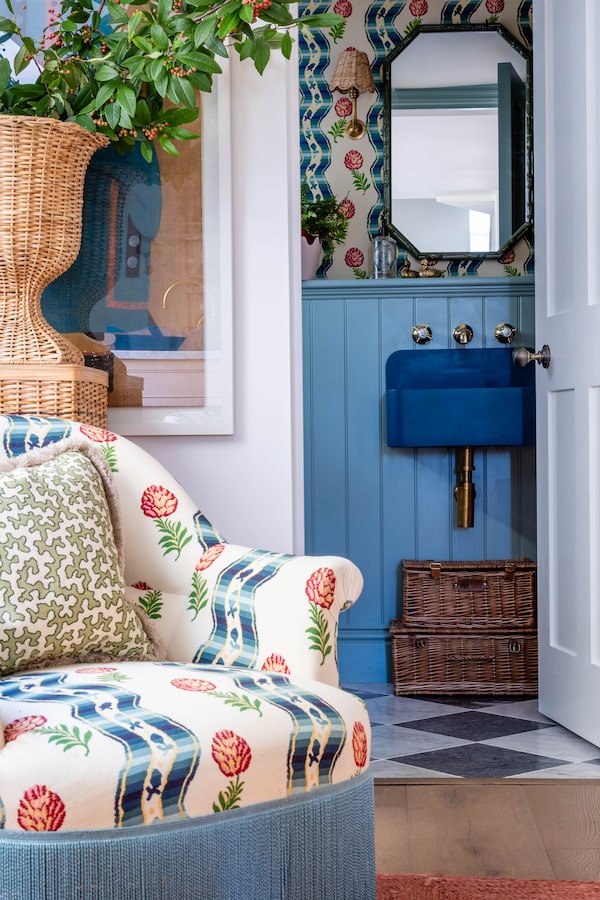
Symington is currently working on projects all over England, as well as Ireland and France.Chris Wakefield/Supplied
With his name gaining recognition, more projects started coming. Just five years later, Sean Symington Interior Design has four employees and multiple features published in every significant British design publication. His own Victorian terrace home in Bath has been his signature – a testament to Symington’s evolution and his ability to transform a space. When he first toured the dingy student rooming house, he didn’t even realize the sitting room had a fireplace; there was a chest of drawers in front of it. Now, the home is awash in pinks, blues and greens and filled with modern maximalist touches, from Georgian oil portraits to whimsical wallpaper – even in the bathroom.
Looking back at Canadian design from a distance, he doesn’t see the same widespread love of history and eclecticism that inspires him abroad. Symington recalls flying to Toronto last summer and sitting next to a young couple who’d just bought their first home in Forest Hill. As he marvelled over the photos of an original staircase with a stunning newel post, they informed him that was the “before” shot. “They said, ‘Oh no, we’ve ripped that out,’ and I had to bite my tongue,” he says. “It was depressing.”
Symington is currently working on projects all over England, as well as Ireland and France. His next goal? To bring his take on colourful, pattern-infused design back home where he got his start. “I would love to have a project in Canada,” he says. “We’re working on it.”
Design Advice: How to Bring Home the Layered British Look
Favour old over new. Symington despairs when he sees homes full of “fast fashion” furniture that all look the same. “I’d rather people go out and buy a bunch of stuff on Facebook Marketplace,” he says. “At least it’s likely to be unique and eclectic, and will give you a better mix of eras.”
Invest in art. Original art is key, says Symington. “Don’t waste money on a canvas from a big-box store with something printed on it. It’s better to find an artist whose work you admire on eBay and get the art framed, or to look for a vintage piece.”
Be adventurous with pattern and texture. “We never have just one print in a room; it’s best to mix large-scale prints with small,” he says, adding that wallpapers that feature a tiny motif are a great choice, and very “in,” because they feel warm and become more of a backdrop. “And I know they can be hard to find in Canada, but patterned lampshades are better than those naff plain drum shades that come with lamps.”
Inject some shine. “Every room should have a touch of gloss, even if it’s something small like a lamp base or a tray. But no glitzy mirrored furniture unless it’s a real antique, please,” Symington says.
Pick the paint last. “People fixate too much on the wall colour at the beginning of the project – ‘Should I do Swiss Coffee or something else?’ – who cares? There are a million paint colours; that’s the easy part.” He advocates for starting a room scheme with a fabric or a piece of art you love and pulling a paint colour from there.